Another Pip
Second tri-colored in 2 days! This one is in good shape, just in the wrong place at the wrong time.
The other will need major rehabilitation.
Second tri-colored in 2 days! This one is in good shape, just in the wrong place at the wrong time.
The other will need major rehabilitation.
Sixteen free-tailed bats have found their way to us during spring migration. Thanks so much to all who cared enough to take time out of their busy days to give these bats a second chance.
Eight of the bats brought in have been released in the last few days; the others will need more work before they’re ready to go.
Here’s one being release by Kyndal under Congress Avenue Bridge. This was a young female saved by Rachel Stewart from a sidewalk at 6th & MoPac on March 12th. You can just barely make out the green identification lipgloss on her right ear.

and a close up of this same photo
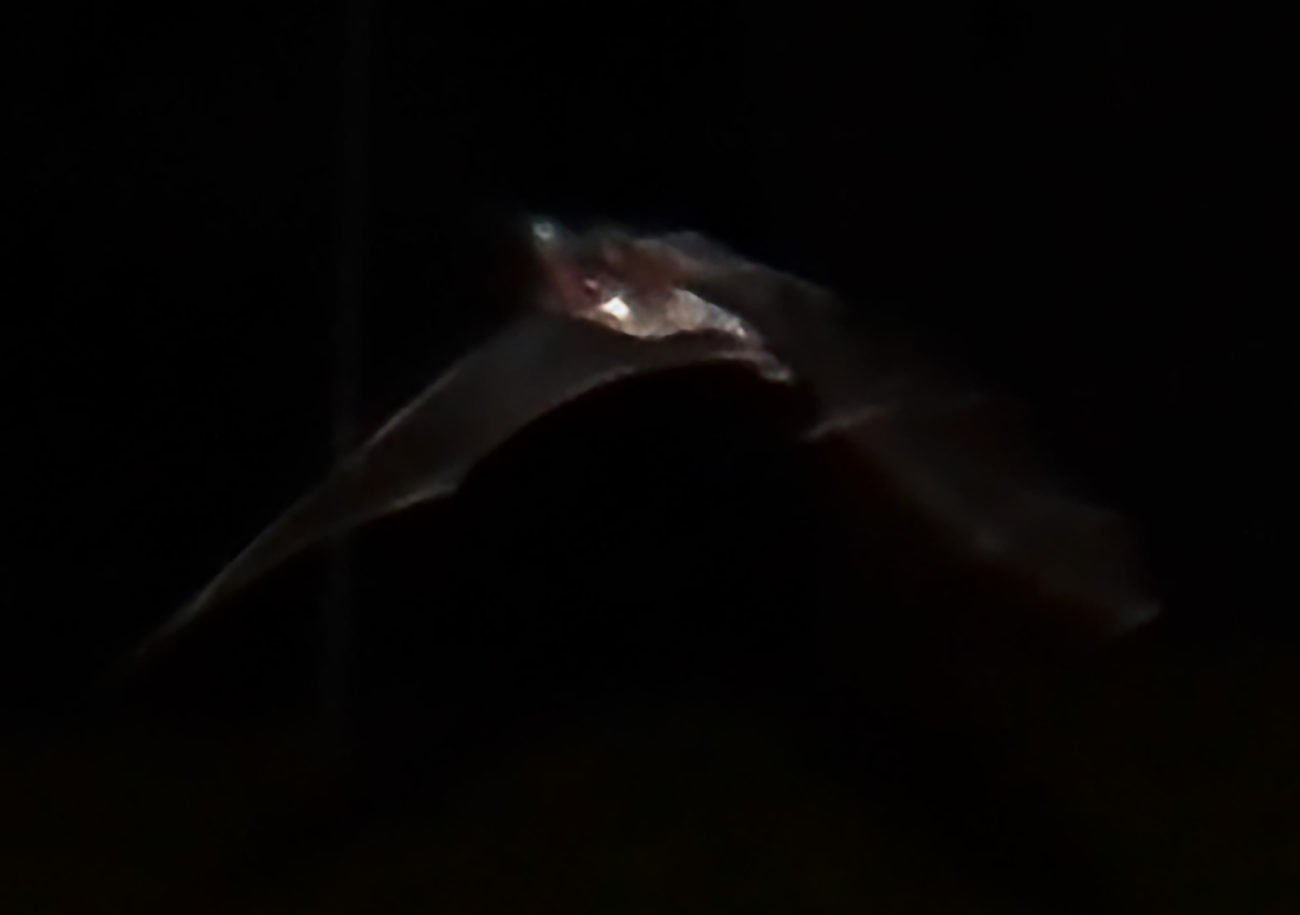
Work is about to start on the new Trail Bridge at Congress Avenue (under the north side of Congress Avenue Bridge). There will be a lovely bat viewing area incorporated in the Bridge with a view of emerging bats in the evening and this lovely bat art by day! (Nice job somebody!)
Bridge crevices are customarily sealed above the trails to prevent guano build-up, so the new trail “bump-out” will require the sealing process to move out over the new trail location. We’ve been consulting with The Trail Foundation on how to safely seal the crevices without harming any bats and they’ve been great at incorporating our suggestions.
We’ll be at the Groundbreaking Ceremony coming soon! They have already had utility crews marking the location of underground utilities in the vicinity of the excavation, so it could start any day now
Just today two kayakers scooped up a little female free-tail (photo below) from under the bridge at this very area, and a concerned jogger called us to come help her. She was real cold and wet, but no serious injuries, so we’re hoping for the best! Maybe she can be an ambassador at the Groundbreaking!

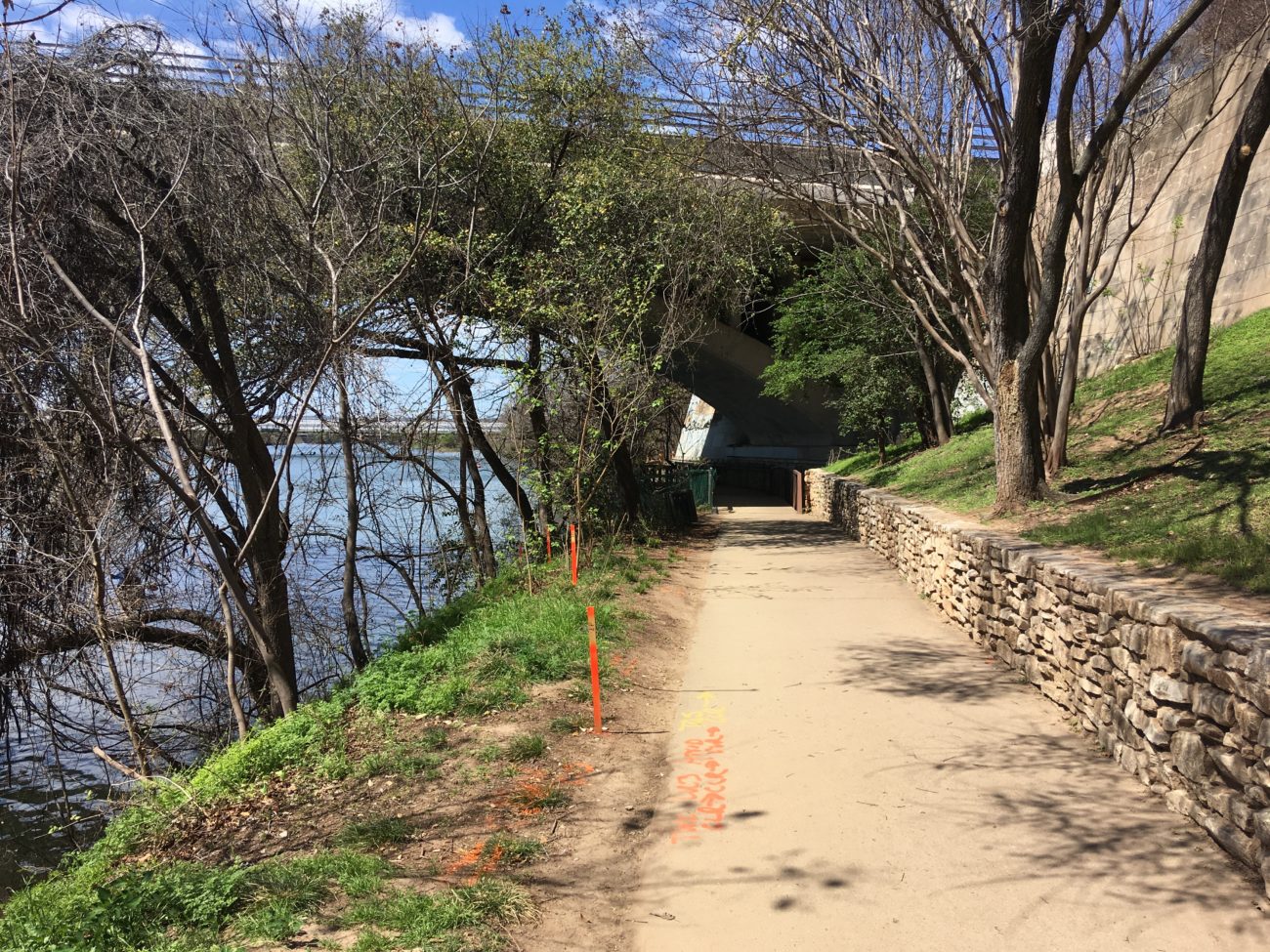
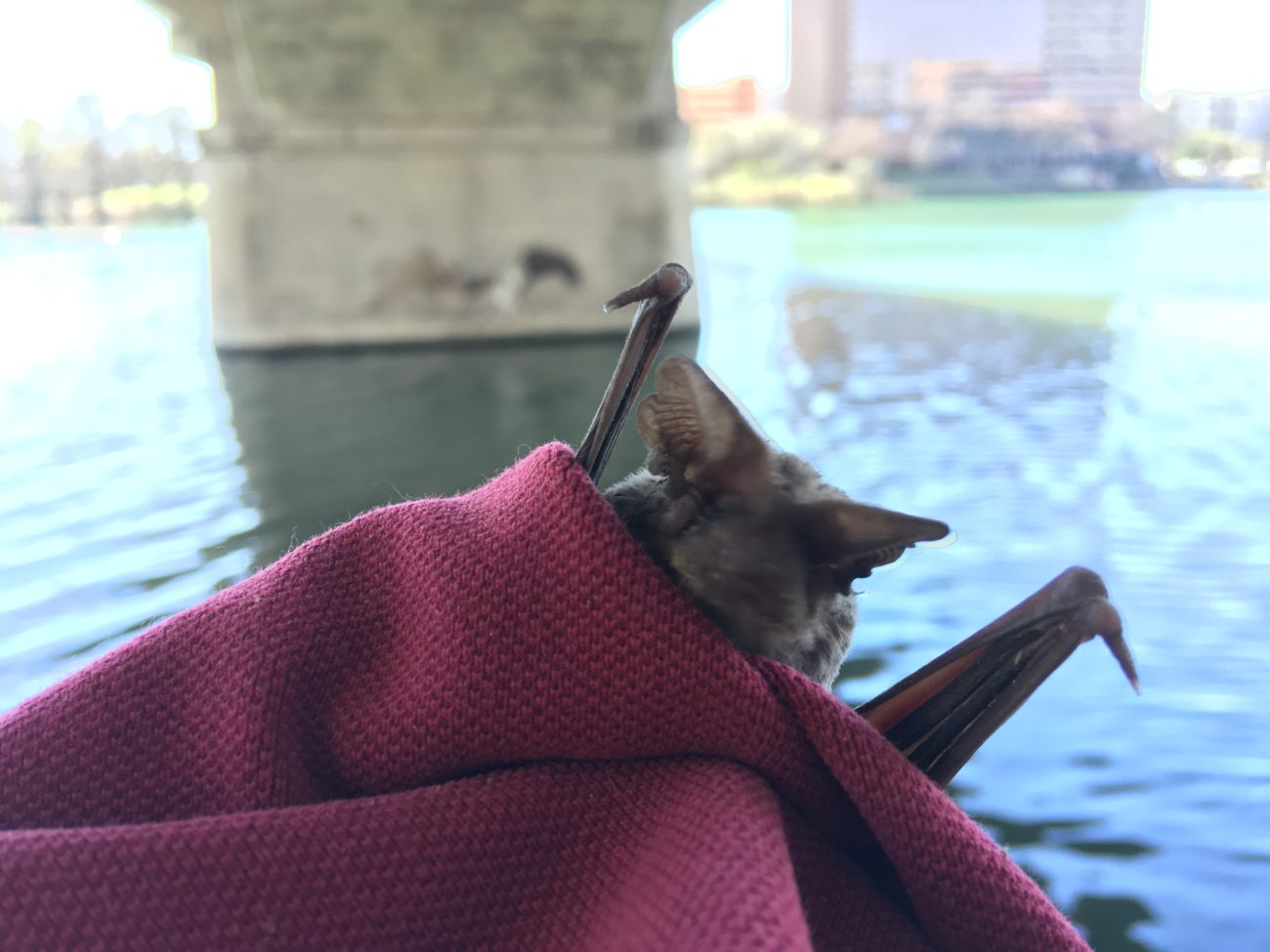
05 March 2018
Uptick in free-tailed bat calls during the day and sure enough, 3 big flights from Congress Avenue Bridge in the evening!
First at 5:47 pm, next at 6:27 pm, and last one at 6:47 pm.
This is a good week earlier than normal for the Congress colony.
Recent studies have shown Tadarida have been migrating two weeks earlier than usual the last few years, but this ups the ante even more.
We so enjoyed our presentation to the Texas State Chapter of the Wildlife Society!
It’s such a pleasure to see so many bright & dedicated students, all highly passionate about wildlife!
Thanks Dillon & Sonia! And thanks Maya, Tyler, & Kristen; we expect to hear from you soon for volunteer opportunities!
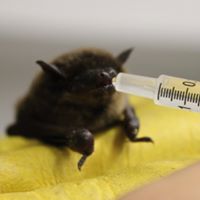
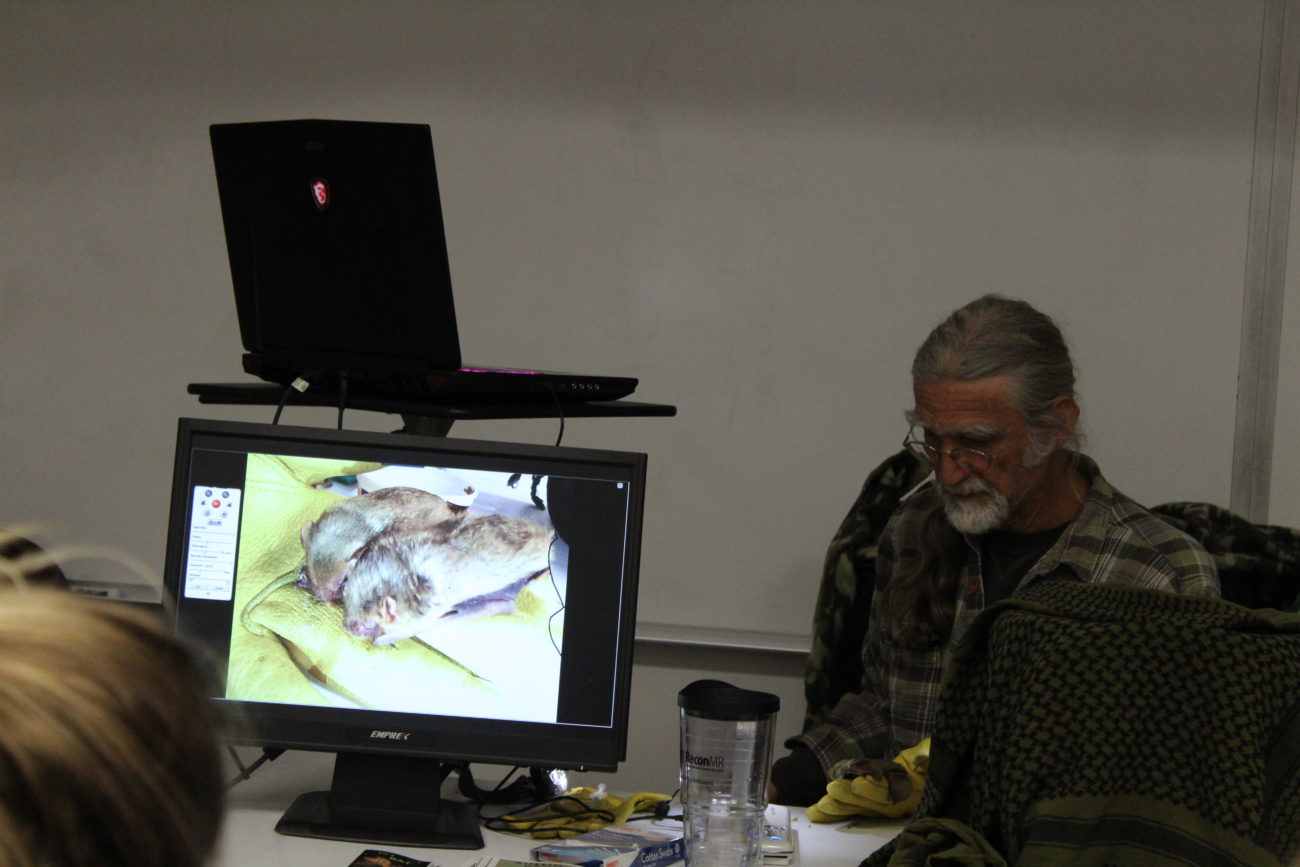
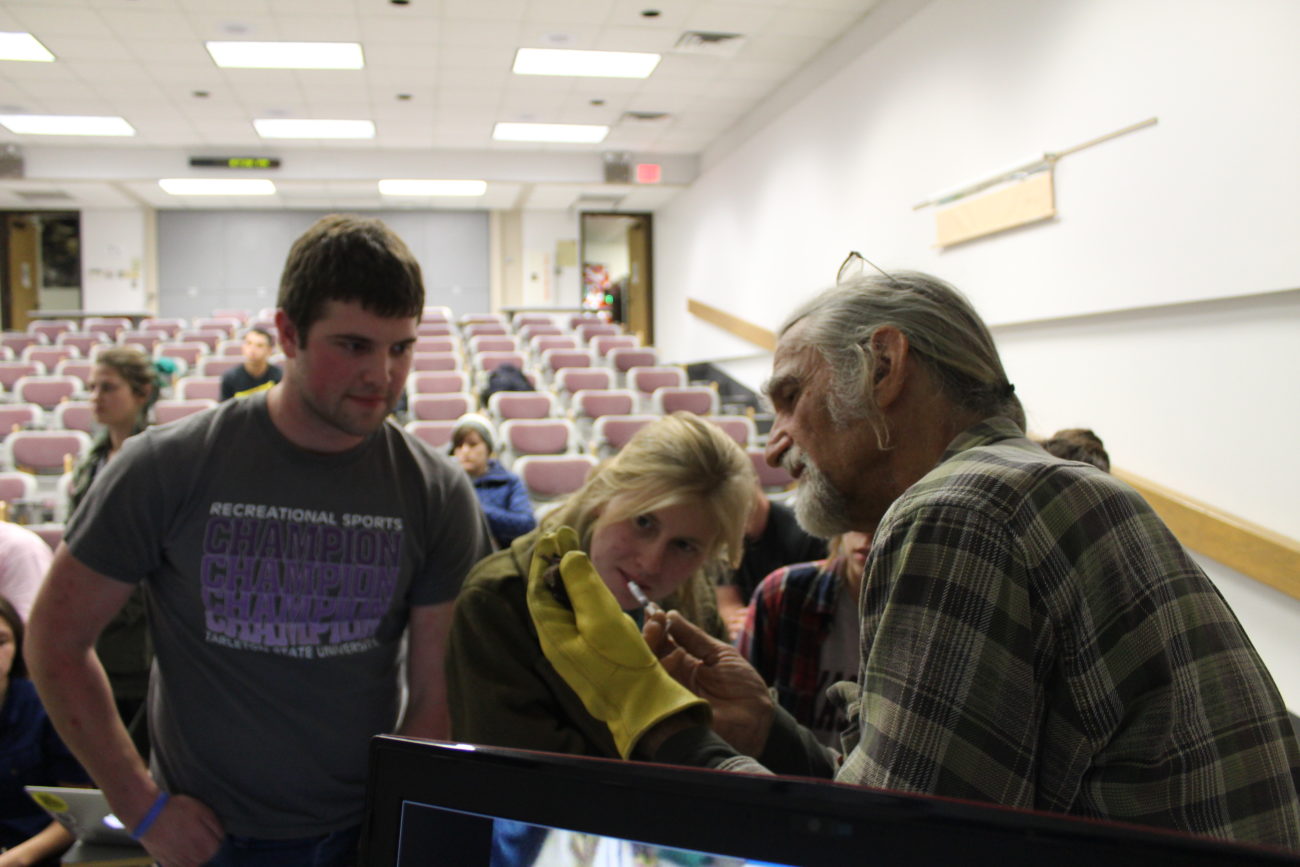
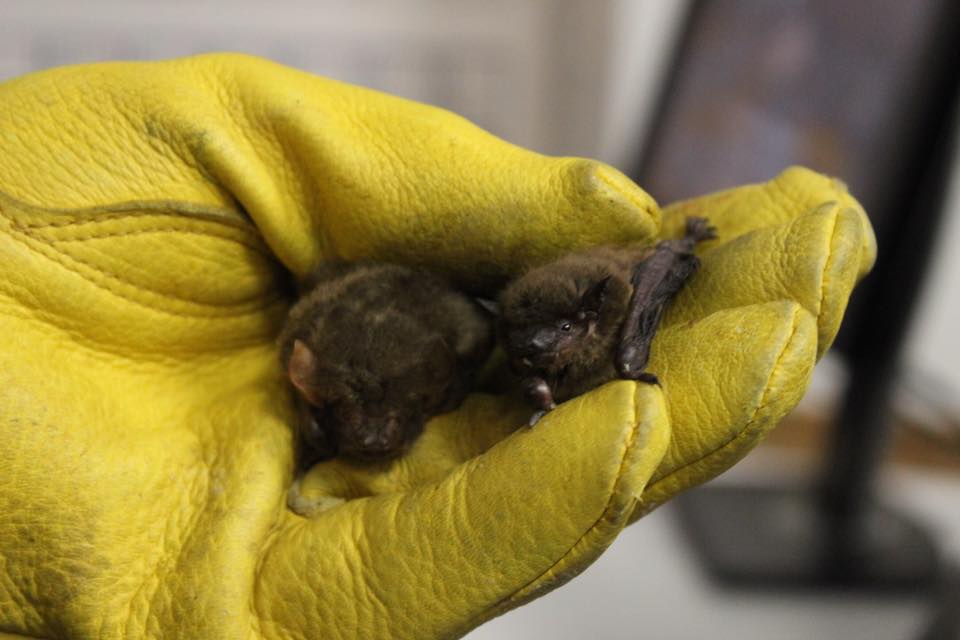
The National Fish & Wildlife Foundation asked us to “represent” as they announced grants given for “Bats For the Future” at the Shell Campus in Houston’s Energy Corridor. Nothing like seeing live bats up close and personal. Our “Bat Ambassadors” were the stars of the show!
Thanks NFWF!

Hi Sara Fern. Here’s Henrietta, the bat you saved from Penn Field, flying off into the night at Congress Avenue Bridge.
Thank you so much for caring about her!
Great day at the Museum on Saturday!
We had a big crowd at our table all day and it was a blast!
And what a privilege to share these bats with wonderful animal-loving children and adults.
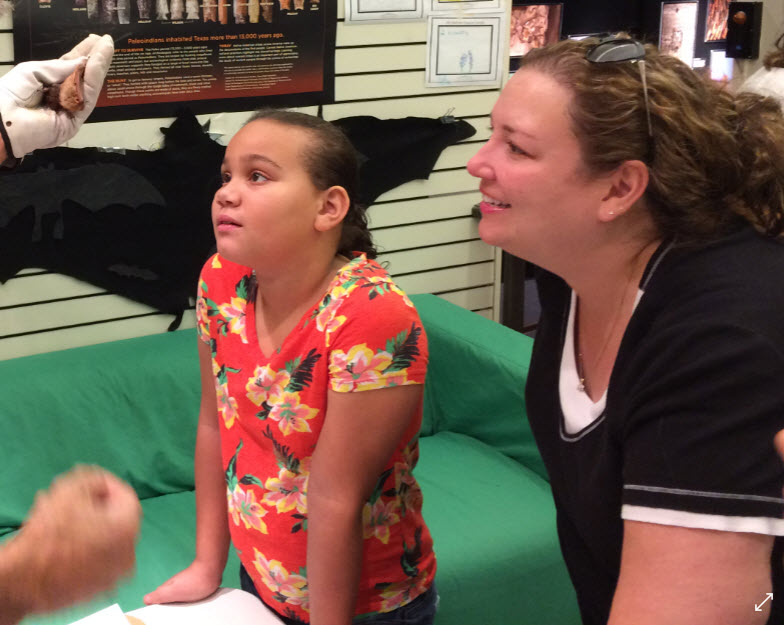
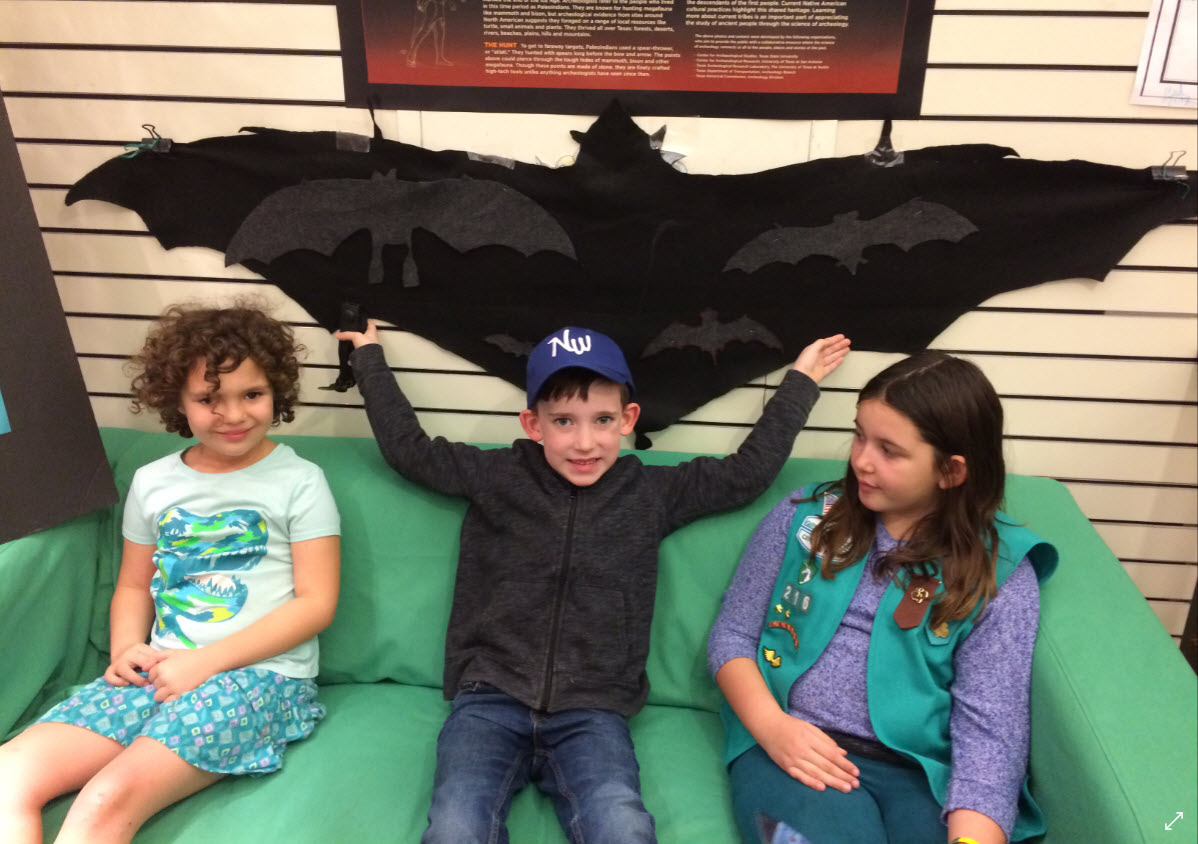
How do you measure up to the worlds largest bat?

This Mexican free-tailed girl was found, a few weeks back, at Penn Field by Sara Fern of iHeart Media
She was super dehydrated from being stuck in a building for many days and was super lucky Sara found her.
After two weeks of good food and smart water, she flew beautifully last night, and is ready for release!
She says “I Live Here, I Give Here”
Thanks for giving her a second chance Sara!

Save the date!
Greetings bat lovers,
This is my second foreign correspondence while I am doing research in Costa Rica (you can find my first blog post further back on this site). To refresh your memories, I am conducting acoustic surveys across Costa Rica using two Wildlife Acoustics SM4BAT Full-spectrum passive recorders to look into the impacts of land use on bat activity and species assemblage. My project is part of a larger NSF funded project led by Drs. Beck and Wasserman looking at the impacts of land-use on primates. My fellow interns are researching antibiotic resistance and hormone levels in primates (these guys get to follow monkeys around and collect fecal samples), water quality of streams entering/inside/leaving forest fragments, fig trees, air quality, and the social implications of eco-tourism. I am the bat lady. We arrived here January 2nd, and after about a week of gathering our equipment and setting up, we started data collection.
What have I learned in my first two weeks here?
1. The weather is the ruler of the quality of your data. Even though it is the ‘dry season’ here in the rainforest, it rains almost every day. Hopefully it will ease up soon because a lot of my recordings are static. Currently, we are at La Selva Biological Research Station. Fortunately, they have a list of over 70 confirmed bat species found in this reserve alone. I plan to compare the findings from the recordings to the list they have to see if we find anything interesting! I have not spent much time analyzing my data yet, as we spend most of our days in the field. While my data collects itself, I am a part of a team and I help the other members collect theirs.
2. Sleep and food are paramount. Field work is no joke and even though I work hard to get 8 hours of sleep a night, I always want more. Those of you comfy in your beds with no assigned time to wake up, I am jealous until mid-March. All of us have already lost weight and our pants are getting baggy even though we eat rice and beans almost every meal! I hope to be super fit by the time I get back to the US.
3. It is very important to get along with your teammates. We are going to be together for 10 weeks, every single day. I love my team and we are making amazing memories here in the jungle. I am excited to get to spend a few days off in Manuel Antonio, hanging out and laughing on the beach with a coconut in my hand! If we did not get along, this would be a very different experience.
4. I am very lucky to have such supportive friends, family, and colleagues. The constant encouragement from everyone makes being away from home very easy. That being said, this is a marathon, not a sprint! I have 8 weeks left and I know at some point all of us will need some TLC and a shoulder to cry on when we are just missing that comfort of home. But I love traveling and know I am fortunate to have such an amazing opportunity to conduct funded research in such a beautiful country on such awesome animals. We’ve done some really cool things: walked across Costa Rica’s second-longest bridge in Tirimbina, climbed a 46 meter high tower overlooking the forest canopy where I got to watch Howler monkeys and White-faced Capuchins flit through the trees just 50 feet away, gone on night hikes and seen Eyelash Vipers and Red-eyed tree frogs, and watched rivers double in depth overnight.
5. It’s all worth it for the bats! So far, I’ve seen Proboscis bats and Greater White-lined bats every day when I walk out of my cabin. I’m sure I will see more species as time goes on. But getting to see their little faces and watching them leave every night to feed is such a rewarding experience. Everyone I talk to is eager to learn all of the fun facts I can throw at them. Many people are surprised to find out not all bats are vampiric (actually less than 1% of the approximate 1200 species drink blood). Anything I can do to improve the understanding, empathy, and appreciation for these bats, I will!
In a couple of weeks the group and I will be leaving for Quepos/Manuel Antonio where we will be doing our research in the National Park and surrounding land. This is a neat tourist town where we will certainly encounter many people who may or may not be familiar with eco-tourism. While my research is going steadily and everyone I talk to is very, very interested in it, I have received disheartening news from the girl doing the social research. She is conducting surveys with as many people as she can, and she has found that many of her subjects have very negative views of bats. Hopefully I, you, and everyone who comes into contact with the Austin Bat Refuge can help change the stigma associated with bats over time to where they can be loved and appreciated for their insane evolutionary history, ecosystem services they provide, and their wonderful personalities.
As always, feel free to email me for any questions or comments (ahall6@stedwards.edu)
Tata for now
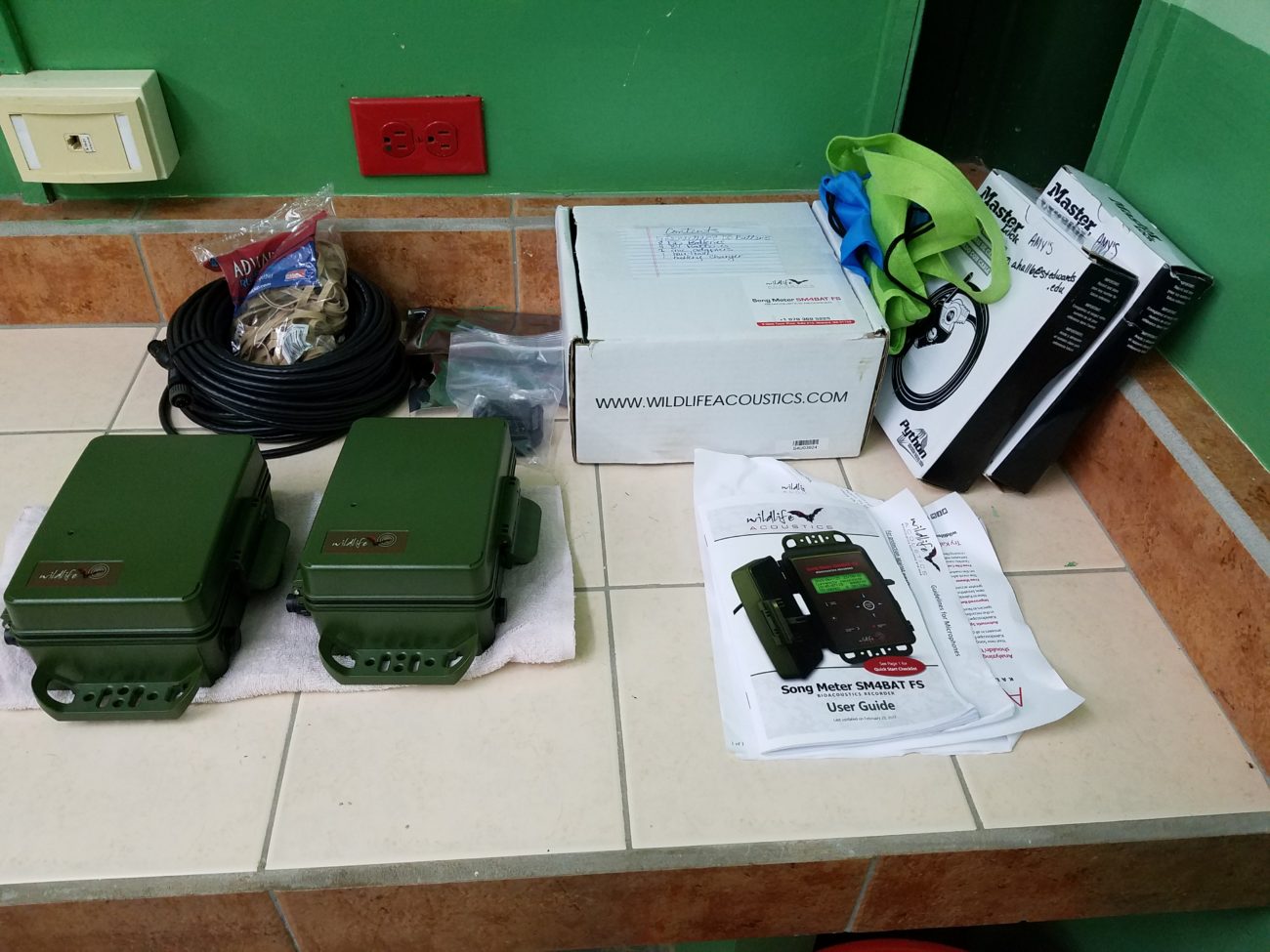
My Gear – Wildlife Acoustics SM4BAT Full-spectrum passive recorders
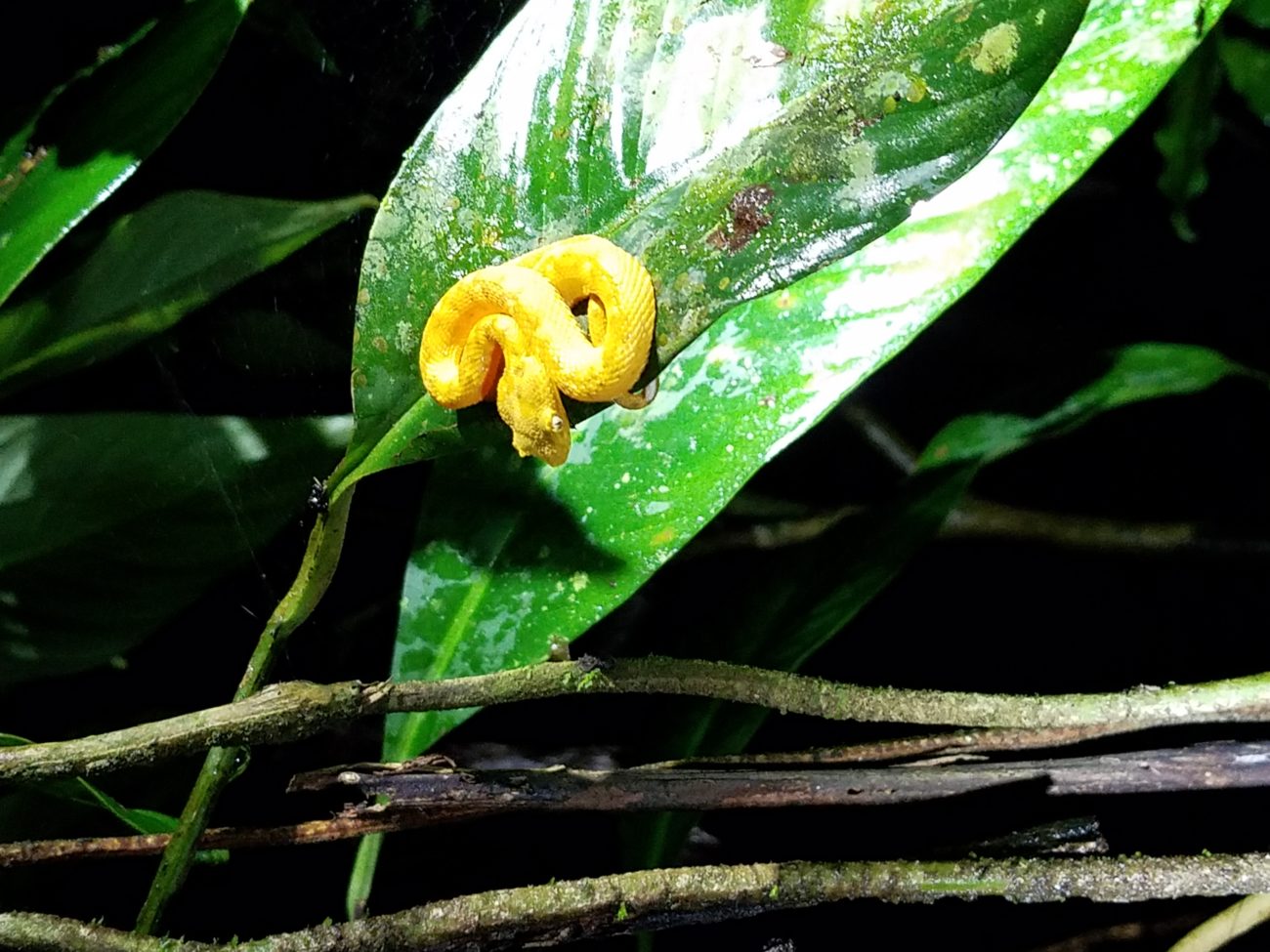
Eyelash Viper
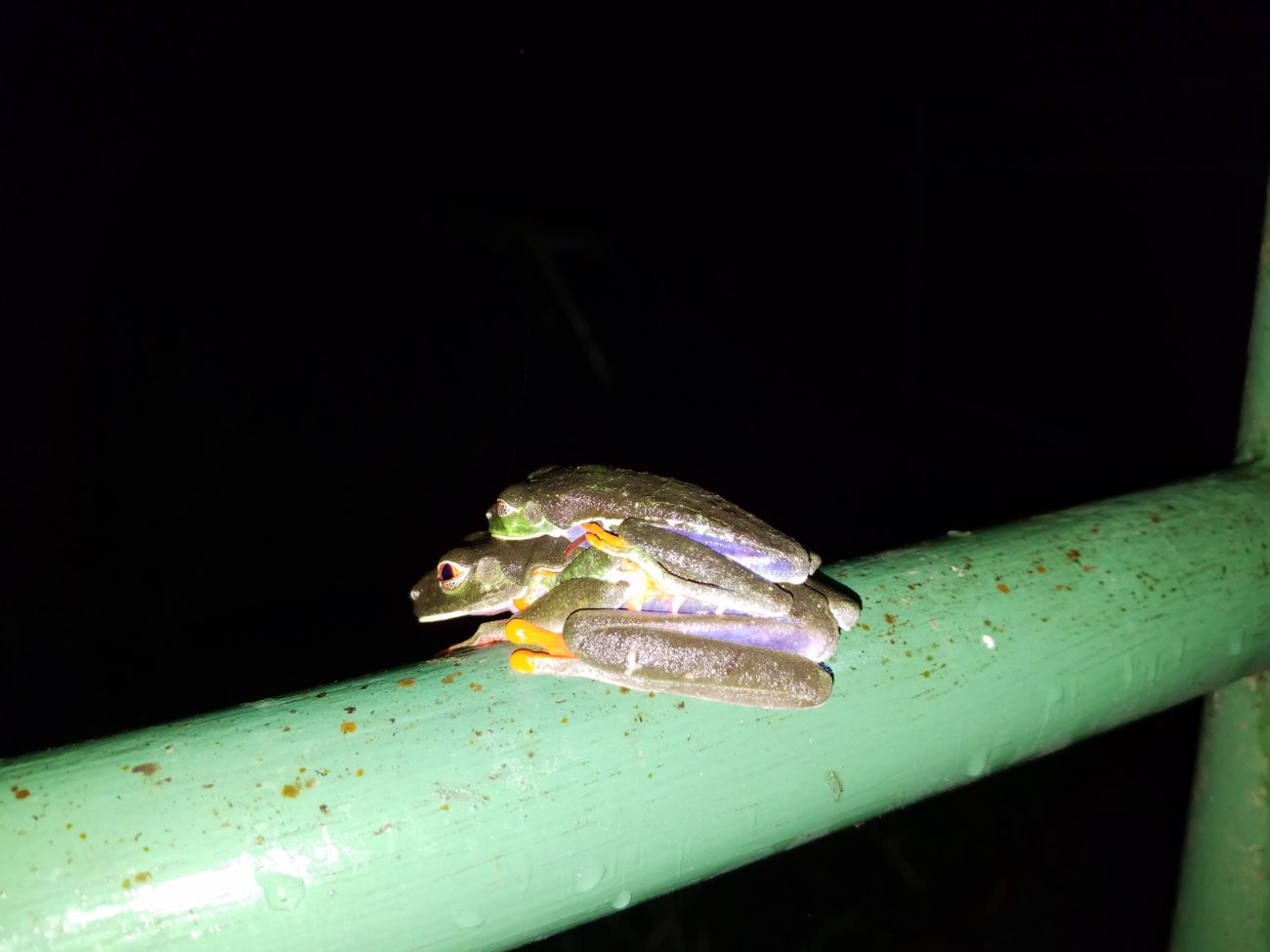
Red-eyed tree frogs